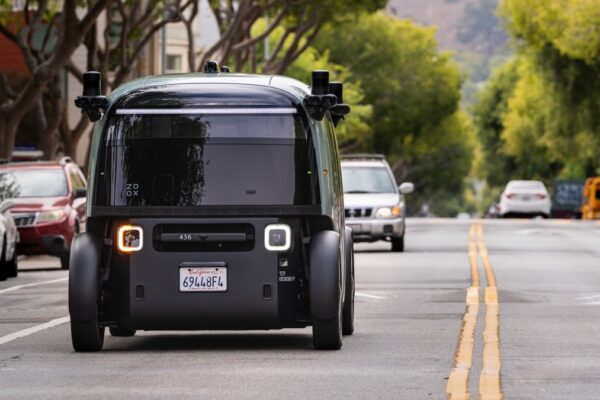How Tech Supports Ten Generations Of Sustainable Wine Production
Share to FacebookShare to TwitterShare to LinkedinIt took five generations for the González family to carefully steer their vineyard through to the 21st century, and the next five aim to carry on the business. Headquartered in Jerez de la Frontera, Spain, the family-owned vineyard has been around since 1835 and was the first to export sherry on the recommendation of Robert Byass, its agent in England.
The González Byass partnership has continued to this day with a mission to make great wines and spirits that bring people together. Now, the company has over 2,000 hectares of vines under cultivation in 12 wine-growing regions of Spain, Chile, and Mexico, where the producer deploys sustainable agricultural techniques to bring indigenous vines back into production.
Running a responsible business “For us, everything revolves around sustainability,” said Elisabet Braza Valle, head of SAP Supply Chain and Finance at González Byass, during an interview at SAP Sapphire Barcelona. “Our goal is to be a reference in the wine sector and also in the field of sustainability, and we’re using technology to do that.”
Valle explained that digitalization is helping to drive efficiency by improving processes and that people are already noticing a more expeditious service. “All the processes are connected,” she said. “Clients notice that we are preparing their packages and managing their invoices faster than before. That’s because, thanks to SAP, we have all the data in the same place.”
In addition to its core SAP ERP system, González Byass recently implemented SAP Responsible Design and Production, a solution that helps enterprises calculate extended producer responsibility (EPR) obligations and define corporate commitments to optimize material choices. It’s also designed to help address all the requirements of the new plastic taxes in Europe.
To help promote a more circular economy, for example, Spanish law mandates an indirect tax levied on plastic in packaging. Calculating the taxable amount is particularly complex and burdensome. Companies must know how much non-recycled plastic is in the non-reusable plastic packaging contained in the shipments they receive.
ForbesThis 300-Year-Old Winemaker Is Embracing AIBy This information should be furnished by the suppliers that now find themselves in a challenging situation as they did not have to comply with this type of requirement before. Collected data must be reliable and verifiable to ensure accuracy when sharing with customers or if it should be questioned by the Spanish tax authorities.
“SAP’s solution not only helps us comply with the law, but it also helps us manage our materials more efficiently,” said Valle, who believes one of the greatest assets of the solution is the visibility it provides into the company’s supplier landscape. “We are encouraging all of our suppliers to commit to being more sustainable, and we assess them every year. We also work together to improve our environmental behavior.”
Valle cited several examples of collaborative engagement, such as reducing the weight of glass bottles and using recyclable packaging materials. The company has already substituted some materials with more sustainable alternatives and is buying cardboard boxes and wood sourced from certified forests.
“We have all the information about our materials in SAP Responsible Design and Production, so we can see how much plastic we are using and how much of it is recycled. That determines the amount of tax we pay,” Valle explained.
All these improvements are part of the company’s People and Planet program that is designed to ensure a nature-friendly, energy-efficient foundation for future generations. The efforts are paying off.
Simplifying a complex landscape According to its sustainability report for 2022, González Byass already reuses or recycles 99% of the waste it generates, and 79% of energy it consumes comes from renewable sources. Water conservation efforts include using rainwater for irrigation, underground irrigation, and satellite-controlled irrigation.
González Byass has already reduced carbon emissions by 20% and is committed to a 55% reduction by 2030. Besides managing its own regulatory obligations in Spain, the company must also be compliant with other regulations in the EU and the UK that impact its business. For example, recycling glass packaging waste is mandatory in all EU Member States. In Spain, this process is driven by Ecovidrio, a non-profit entity managing the Collective System of Extended Producer Responsibility (SCRAP).
“One of our next projects is to set up Ecovidrio in the SAP Responsible Design and Production solution, where we manage all our tax declarations and reports,” Valle said. “Another critical report is the declaration for the Ministry of Ecological Transition. Technology is helping us become a global reference in the sector because now we’ve integrated all relevant information needed for compliance.”
Four of its wineries have received the Wineries for Climate Protection certification, the first of such credentials specific to the wine industry targeting environmental sustainability. The certification recognizes sustainability activities in wineries in four key areas: reducing greenhouse gas emissions, managing water, reducing waste, and increasing energy efficiency.
Valle is confident that with the aid of technology, González Byass will not only be a leader and a reference in the sector but, most importantly, it will secure its place as an exceptional winemaker for posterity. After all, since its most iconic wine Tio Pepe was a favorite of Picasso’s, it’s a good thing González Byass is doing everything to continue producing the best wines and spirits for future connoisseurs.
Follow me on Twitter.












 Bitcoin
Bitcoin  Ethereum
Ethereum  Tether
Tether  XRP
XRP  USDC
USDC  Wrapped SOL
Wrapped SOL  TRON
TRON  Lido Staked Ether
Lido Staked Ether  Dogecoin
Dogecoin